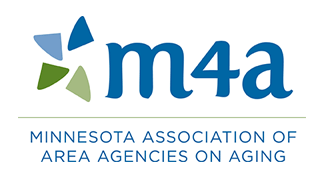Reflecting on Alzheimer’s & Brain Awareness Month
This month, MNRAAA has been highlighting and raising awareness around Alzheimer’s and Brain Health. To assist in this effort, we had two individuals studying this topic provide updates and resources. Robyn Birkeland provided a great summary of Alzheimer’s disease and how it impacts the brain. Katie Louwagie followed the week after with an article about brain health. This included physical and mental activities to reduce the risk of Alzheimer’s and other brain-related diseases.
Thank you to the University of Minnesota School of Public Health for participating in this endeavor. There is an ongoing association between the Area Agencies on Aging and the University of Minnesota to participate in events, fairs, and events to provide education, resources, and training. If you or your organization want someone to speak about Alzheimer’s or Brain Health, please get in touch with us at www.mnraaa.org.
As June (when we highlighted Alzheimer’s Disease) winds down, the disease will continue. Our awareness and our ability to learn and be proactive must continue. I encourage you to share the information in these articles with your family, friends, neighbors, and anyone who will listen!
For additional information from the University of Minnesota School of Public Health, visit the Center for Healthy Aging and Innovation’s (CHAI) website at https://www.sph.umn.edu/research/centers/chai/. You can find a wealth of information from education and research to community engagement. The Alzheimer’s Association also features information about the disease and supports for caregivers. You can also search to see if there is a local chapter near you. Finally, you can search for services at www.mnhelp.org.






